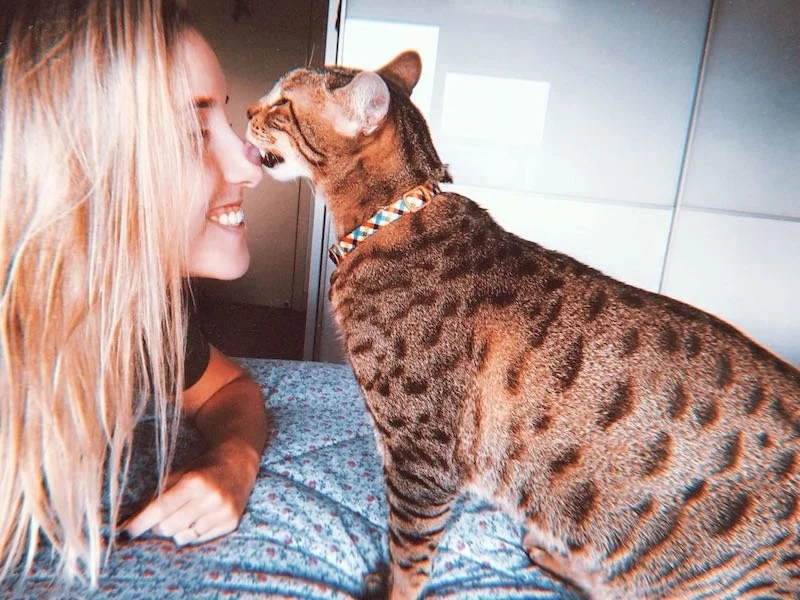For many, a cat is more than just a pet; it's a cherished family member. Keeping them healthy and happy is a top priority for any cat owner. The happiness and health of a cat can significantly depend on its environment, diet, exercise, and social interaction. A good understanding of these factors and implementing proper care practices can lead to a happier, healthier cat. This article will provide insights into how to keep your feline companion at their best.
Creating a Stimulating Environment
Cats are curious creatures. They love to explore their surroundings and hunt for imaginary prey. To keep your cat entertained, you should provide them with a stimulating environment. This could include cat trees, scratching posts, interactive toys, and safe access to windows to watch the outside world. Regularly changing these stimuli will keep your cat interested and mentally stimulated.
Proper Nutrition
Nutrition is the foundation of health for every living being, including cats. Feed your cat a balanced diet specifically designed for their life stage, whether they're a kitten, adult, or senior cat. Beware of obesity, a common problem in domestic cats, and manage portion sizes to maintain a healthy weight. Treats are okay, but they should make up no more than 10% of your cat's diet.
Regular Exercise
Cats, especially those that are indoor, need regular exercise to keep fit and prevent obesity. Interactive toys such as laser pointers, feather wands, and toy mice are great ways to encourage your cat to move around. Regular play sessions also provide mental stimulation, reducing the likelihood of behavioral problems.
Veterinary Care
Regular check-ups at a reliable veterinary clinic such as The Gulch vets can ensure that your cat remains in the best health. Veterinarians can catch potential health problems early before they become serious issues. Regular vaccinations, dental checks, and parasite control are all vital aspects of preventive healthcare. Vets also provide advice tailored to your cat's specific needs and lifestyle, ensuring optimal health.
Importance of Social Interaction
Cats are often seen as solitary animals, but they need social interaction with their human family and, where appropriate, other pets. Regular, positive interaction with your cat, such as petting and playing, can boost their mood and reduce the risk of stress-related behaviors.
Cat Portraits: Capturing Joy
Taking the time to capture your cat's personality through cat portraits can add a unique element of joy to your life and your pet’s. These portraits serve as a constant reminder of the bond you share, reinforcing the love and affection you have for each other. Moreover, the process of getting your cat to pose or capturing them in their natural, playful state can be a fun and engaging activity, contributing to your cat's emotional well-being.
Fostering a Healthy Routine
Establishing a daily routine can contribute immensely to your cat's overall health and happiness. Regular feeding times, play sessions, and rest periods can help your cat feel secure and content. Always remember, your affectionate touch and the time you spend with your feline friend are irreplaceable aspects of their life. The key to a healthy and happy cat is consistency, understanding, and loads of love.
Understanding Cat Behavior
Cats are expressive creatures. Understanding their behaviors and responses can help you address any potential issues early on. Changes in their behavior such as aggression, loss of appetite, or unusual isolation can be signs of health problems or stress. Keeping a keen eye on these subtle shifts and seeking prompt advice from a professional, when needed, can ensure your feline friend stays healthy and content. Remember, a happy cat equates to a vibrant, joyful home.
Conclusion
Caring for a cat is a rewarding journey filled with purrs, playfulness, and affectionate companionship. A thriving cat requires a stimulating environment, balanced nutrition, regular exercise, social interaction, and dedicated healthcare provided by trusted professionals. Understanding your cat's unique behaviors and capturing joyful moments in cat portraits can further strengthen the bond you share. In the end, maintaining your cat's health and happiness comes down to a consistent routine, empathy, and lots of love. With these elements in place, you can look forward to many years of happiness with your furry friend, filled with a wealth of purrs and contented tail wags.










